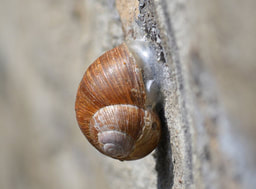Superglue is incredibly useful — right until you end up attached to your craft project. But an adhesive invented by University of Pennsylvania scientists is just as strong as standard superglue, and far more forgiving. The adhesive, based on snail slime, can be unattached and reattached over and over without losing its strength, and may save manufacturers from costly mistakes.
Humanity has been searching for the best way to stick two things together for a very long time. As early as 200,000 years ago, humans were making sticky tar by carefully burning birch bark in a time-intensive process. Nearly 4,000 years ago, Egyptians were boiling animal parts to make the first liquid glues. Rubber-based glues were invented in 1830, with modern superglue hitting store shelves in 1958. But all of these adhesives come with a frustrating trade-off: They can be strong and permanent, like superglue, or reusable but not very sticky, like Post-its.
Now, a team led by Shu Yang, professor of material science and engineering at Penn, has managed to combine the best properties of both.
Yang shared her findings in a study in the Proceedings of the National Academy of Sciences. Just two stamp-size pieces of her adhesive were enough to hold the weight of a 160-pound person, the study said.
Named PHEMA, after its composition (polyhydroxyethylmethacrylate), it is so effective that at first, Yang had trouble measuring its strength. “I thought it was very strong, but I didn’t know how strong,” she said. “It took my student over a year to measure it.”
In the end, the team had to design straps made out of Kevlar to pull the adhesive apart.
But what makes it stand out is that its stickiness can be turned off and on again. The adhesive holds tight when dry, but add some water and within a few minutes, it detaches, ready to be reused.
“To be able to let go — that’s a big deal,” said Andrew Smith, professor of biology at Ithaca College in New York, who has developed a medical glue based on slug slime, and was not involved in the study. “We have very good glue for certain things. The challenges [include] when you need something that’s reversible.”
The new adhesive’s abilities comes from the fact that it isn’t a liquid, like glue, but a hydrogel, such as those found in Jell-O or soft contact lenses. When squishy and wet, the adhesive is able to fit into the microscopic grooves that are on all surfaces. Drying locks the product against these grooves, attaching it to the surface.
While the idea of a reversible superglue is new to humans, snails have been making something similar for millions of years. “Some snails anchor themselves to a tree with [a structure called] their epiphragm. It can be attached so hard that you can’t pull it off with your hand — you need to get a chisel.” said Gary Rosenberg, curator of mollusks at the Academy of Natural Sciences of Drexel University. Once it rains, the snails detach and continue crawling around.
The next innovation may already be out there in nature. Snails, slugs, mussels, geckos, octopuses, and even cockroaches are being studied for the way they can stick to things. “There’s a lot of animals that produce glues with lots of unusual properties,” Smith said. “You’re getting adhesives designed for all sorts of situations, with lots of variation that can inspire us.”



 RSS Feed
RSS Feed